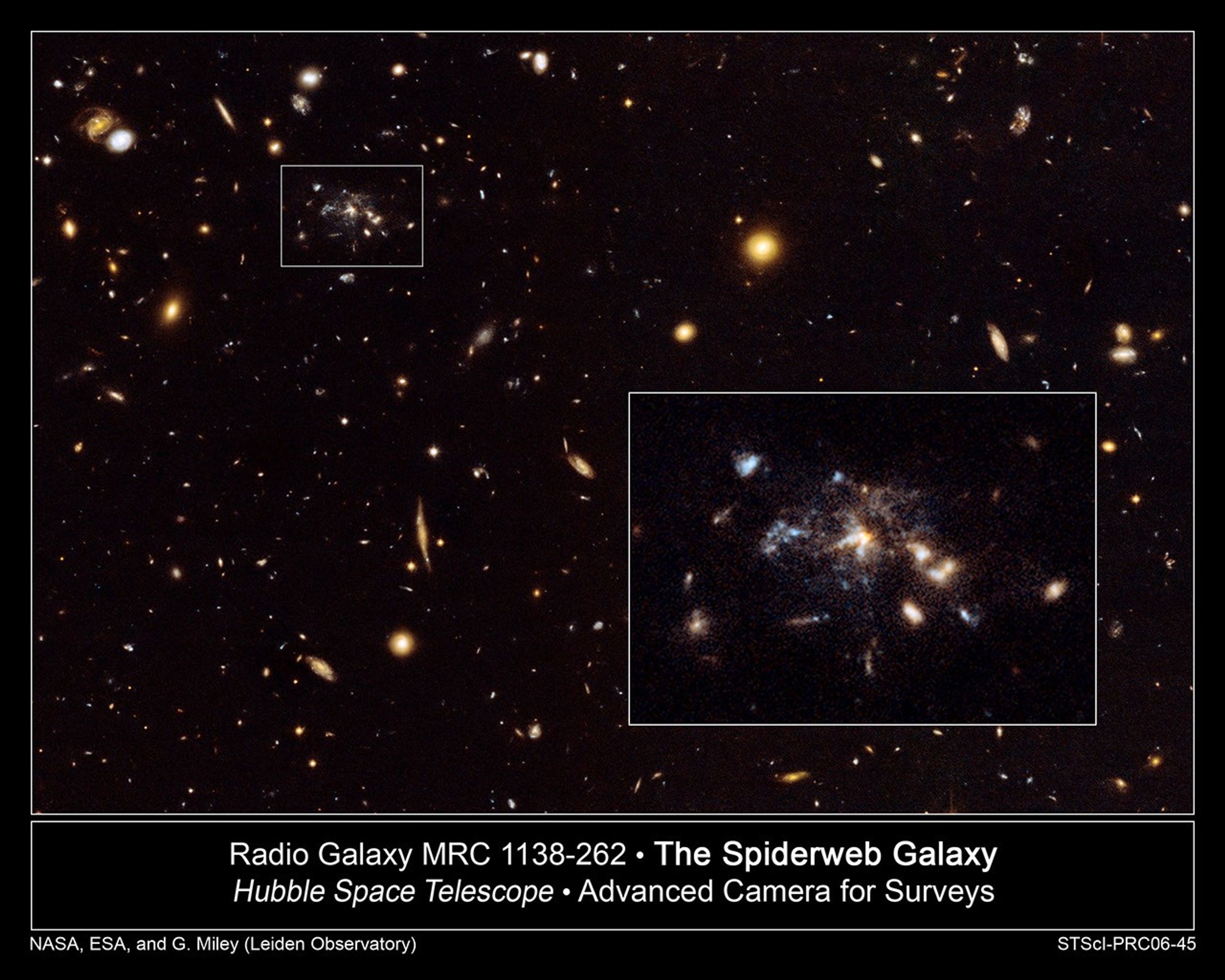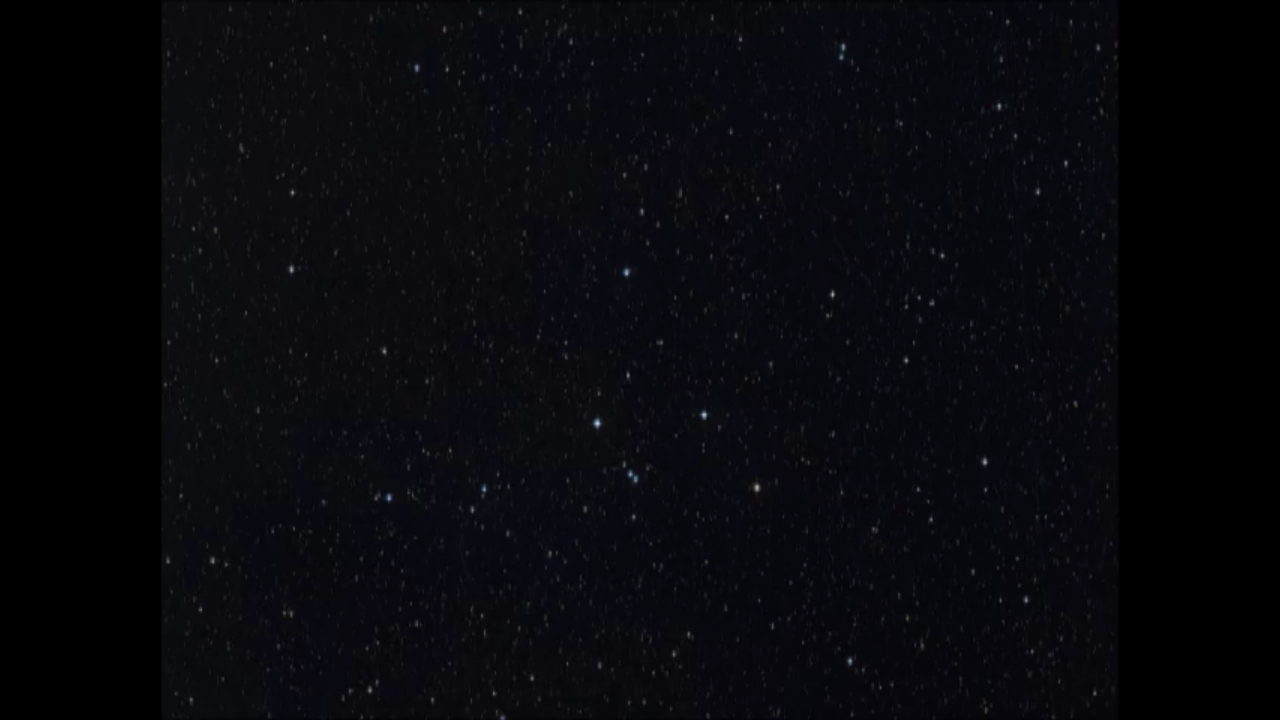1 min read
Wide View of Spiderweb Galaxy Field

About the Object
- R.A. PositionR.A. PositionRight ascension – analogous to longitude – is one component of an object's position.11h 40m 48.4s
- Dec. PositionDec. PositionDeclination – analogous to latitude – is one component of an object's position.-26° 29' 11.0"
- ConstellationConstellationOne of 88 recognized regions of the celestial sphere in which the object appears.Hydra
- DistanceDistanceThe physical distance from Earth to the astronomical object. Distances within our solar system are usually measured in Astronomical Units (AU). Distances between stars are usually measured in light-years. Interstellar distances can also be measured in parsecs.10.6 billion light-years (3.2 billion parsecs)
About the Data
- Data DescriptionData DescriptionProposal: A description of the observations, their scientific justification, and the links to the data available in the science archive.
Science Team: The astronomers who planned the observations and analyzed the data. "PI" refers to the Principal Investigator.This image was created from HST data from proposal 10327: H. Ford (Johns Hopkins University), G. Miley (Leiden Observatory), A. Zirm (Johns Hopkins University), R. Overzier (Leiden Observatory), W. Sparks (STScI), and H. Tran (California Association for Research in Astronomy). The science team is comprises: G. Miley and R. Overzier (Leiden Observatory), A. Zirm and H. Ford (Johns Hopkins University), J. Kurk (Max Planck Institute for Astronomy, Heidelberg), L. Pentericci (INAF/Observatory of Rome), J. Blakeslee (Washington State University), M. Franx (Leiden Observatory), G. Illingworth (Lick Observatory/University of California, Santa Cruz), M. Postman (STScI), P. Rosati (European Southern Observatory, Garching), H. Rottgering (Leiden Observatory), B. Venemans (Institute for Astronomy, Cambridge), and E. Helder (Leiden Observatory). - InstrumentInstrumentThe science instrument used to produce the data.HST>ACS/WFC
- Exposure DatesExposure DatesThe date(s) that the telescope made its observations and the total exposure time.May 17-22, 2005
- FiltersFiltersThe camera filters that were used in the science observations.F475W (SDSS g) and F814W (I)
- Object NameObject NameA name or catalog number that astronomers use to identify an astronomical object.MRC 1138-262, Spiderweb Galaxy, B1 1138-26
- Object DescriptionObject DescriptionThe type of astronomical object.Galaxy Protocluster
- Release DateOctober 12, 2006
- Science ReleaseHubble Captures Galaxy in the Making
- Credit

This image is a composite of many separate exposures made by the ACS instrument on the Hubble Space Telescope using several different filters. Two filters were used to sample broad and narrow wavelength ranges. The color results from assigning different hues (colors) to each monochromatic image. In this case, the assigned colors are: Blue: F475W (SDSS g) Green: F475W (SDSS g) + F814W (I) Red: F814W (I)
Related Images & Videos

Hubble Captures Galaxy in the Making
Images from NASA's Hubble Space Telescope have provided a dramatic glimpse of a large and massive galaxy under assembly by the merging of smaller, lighter galaxies. Astrophysicists believe that this is the way galaxies grew in the young universe. Now, Hubble observations of the...

Hubble Captures Galaxy in the Making
A slow, graceful zoom moving deeper into the nighttime sky descends on an image taken by the Hubble Space Telescope's Advanced Camera for Surveys. Nicknamed the "Spiderweb Galaxy," MRC 1138-262 shows dozens of star-forming satellite galaxies as individual clumpy features in the...
Share
Details
Claire Andreoli
NASA’s Goddard Space Flight Center
Greenbelt, Maryland
claire.andreoli@nasa.gov

































